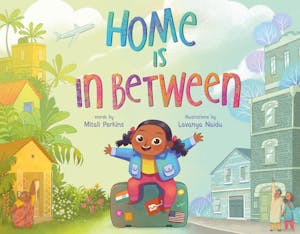All the Way to the Top
A Review by Amanda Kendall
Bibliography:
Pimentel, Annette Bay. 2020. All the Way to the Top: How One Girl's Fight for Americans with Disabilities Changed Everything. Ill. by Nabi H. Ali. Naperville, Illinois: Sourcebooks explore. ISBN 1492688975
Plot Summary:
All the Way to the Top is a biographical picture book about Jennifer Keelan-Chaffins. Born with cerebral palsy, Jennifer knew the challenges facing everyone, but especially kids with disabilities. She was often made fun of and left out of things at school. At a very early age, she knew she wanted to make a difference. Together with her parents, Jennifer joined activists fighting for equal rights for disabled people. She joined protests, waved signs, and spoke at events. When she was eight, the American Disabilities Act had not been past yet. Jennifer joined others on the steps of the United States Capital, got out of of her wheel chair, and crawled up the steps to the capital in the famous Capital Crawl. Determined to represent the many children with disabilities, Jennifer's picture climbing the steps made the news and got people's attention. Finally, the American Disabilities Act was passed ensuring that "entrances would be rebuilt, sidewalks redesigned, and buses reengineered" (Pimentel 2020).
Critical Analysis:
Jennifer Keelan-Chaffins' story is an one of bravery, selflessness, and action. Pimentel and Ali tell her story well, capturing her determination and gumption through both the text and illustrations. Pimmentel delicately balances the text between important historical/biographical information and the gentle storytelling flow of a picture book. She uses repetition of STOP and GO throughout the book to draw the reader's attention to the obstacles Jennifer faced in the world and the determination she had to push through those challenges. The STOP and GO reference continue all the way to the end, when Pimentel cleverly changes it up by saying, "Jennifer has places to GO... AND NOTHING WILL STOP HER NOW" (Pimentel 2020). Written for a younger audience, Pimmentel also weaves in explanations of the American Disabilities Act and the activists behind the disabilities equality movement, giving readers important information about a topic that is likely brand new to them when reading the book.
Ali's illustrations are large, colorful, and bold. The
illustrations are inclusive and diverse, including people with a range
of skin tones and an array of different disabilities throughout the
book. All characters are drawn with care, honoring the difference in
people and avoiding any stereotypes or misrepresentations. Some images have a dark or grey background with the illustration of Jennifer in full color toward the front. This draws the reader's eye to Jennifer, highlighting the importance of her journey in activism, but in doing so also blends all the other disabled activists into the background missing the mark for giving a voice to a group of people who have often been overlooked or left out.
All the Way to the Top is sure to inspire young readers to get involved in activism. The foreword written by Jennifer Keelan-Chaffins invites readers to get involved from the very first page, saying "I hope that by sharing my story, kids everywhere will see that you don't have to be a grown-up to make a difference. If you believe in something, say it loud for everyone to hear!" Unlike most picture books the forward is not squeezed between the title page and the first page of the story. The forward is strategically printed on the left hand side of the first page of the story, making sure it is easily seen by every reader who picks up the book. Finally, Pimentel includes an informational section and timeline at the end of the book, giving readers additional information on disabilities, the fight for equality, the Capital Crawl, and more. She also includes the original photograph of Jennifer making the climb in 1990. The timeline includes major milestones of the Disability Rights Movement paired with important events from Jennifer's life. The extras in the book are sure to peak the interest of young readers and will likely lead to additional questions and research on this important topic and movement.
Review Excerpts & Awards:
BOOK LIST (February 1, 2020) "The book’s informative back matter includes concise explanations of topics mentioned in the text. Pimentel’s compelling, present-tense narrative gives the story great immediacy, helping children connect with Jennifer’s reactions to physical barriers and social injustice. Making good use of color, light, and contrast, Ali contributes a series of expressive digital illustrations. Still an activist, Jennifer Keelan-Chaffins offers a thought-provoking foreword to this inspiring picture book."
BOOK LIST (February 1, 2020) "The book’s informative back matter includes concise explanations of topics mentioned in the text. Pimentel’s compelling, present-tense narrative gives the story great immediacy, helping children connect with Jennifer’s reactions to physical barriers and social injustice. Making good use of color, light, and contrast, Ali contributes a series of expressive digital illustrations. Still an activist, Jennifer Keelan-Chaffins offers a thought-provoking foreword to this inspiring picture book."
SCHOOL LIBRARY JOURNAL (February 1, 2020) "Pimental's present tense writing and portrayal of the power of a young
person fighting to create change will engage young audiences. A few
illustrations do not visually match the content of the text. A foreword
and back matter enhance understanding. The time line that is provided
might cause readers to seek extra information to fully understand
specific milestones. VERDICT Even with a few quibbles, Pimentel offers a
great look at a young activist creating change and a better
understanding of the importance of the ADA"
- Schneider Family Book Honor, 2021
Curricular Connections:
- Do some research. What are somethings that changed with the passing of the American Disabilities Act? How did the ADA help people with different disabilities?
- Activists are speaking out on many different topics. Invite students to learn about other areas of activism that might interest them.


